BYD Atto 3 vs Nissan Leaf – Which car suits you better?
Costs and Efficiency:
Price and efficiency are key factors when choosing a car – and this is often where the real differences emerge.
Nissan Leaf has a barely noticeable advantage in terms of price – it starts at 30800 £, while the BYD Atto 3 costs 33400 £. That’s a price difference of around 2649 £.
In terms of energy consumption, the advantage goes to the BYD Atto 3: with 16 kWh per 100 km, it’s minimal more efficient than the Nissan Leaf with 16.70 kWh. That’s a difference of about 0.70 kWh.
As for range, the BYD Atto 3 performs hardly perceptible better – achieving up to 420 km, about 35 km more than the Nissan Leaf.
Engine and Performance:
Power, torque and acceleration are the classic benchmarks for car enthusiasts – and here, some clear differences start to show.
When it comes to engine power, the Nissan Leaf has a slight edge – offering 217 HP compared to 204 HP. That’s roughly 13 HP more horsepower.
In acceleration from 0 to 100 km/h, the Nissan Leaf is minimal quicker – completing the sprint in 6.90 s, while the BYD Atto 3 takes 7.30 s. That’s about 0.40 s faster.
In terms of top speed, the BYD Atto 3 performs slight better – reaching 160 km/h, while the Nissan Leaf tops out at 157 km/h. The difference is around 3 km/h.
There’s also a difference in torque: Nissan Leaf pulls minimal stronger with 340 Nm compared to 310 Nm. That’s about 30 Nm difference.
Space and Everyday Use:
Beyond pure performance, interior space and usability matter most in daily life. This is where you see which car is more practical and versatile.
Both vehicles offer seating for 5 people.
In curb weight, Nissan Leaf is slightly lighter – 1580 kg compared to 1825 kg. The difference is around 245 kg.
In terms of boot space, the BYD Atto 3 offers to a small extent more room – 440 L compared to 394 L. That’s a difference of about 46 L.
In maximum load capacity, the BYD Atto 3 performs clearly better – up to 1338 L, which is about 548 L more than the Nissan Leaf.
When it comes to payload, Nissan Leaf slightly takes the win – 415 kg compared to 335 kg. That’s a difference of about 80 kg.
Who wins the race?
The Nissan Leaf proves to be won narrowly and therefore becomes our DriveDuel Champion!
Nissan Leaf is the better all-rounder in this comparison.
Costs and Consumption
View detailed analysis
Engine and Performance
View detailed analysis
Dimensions and Body
View detailed analysis
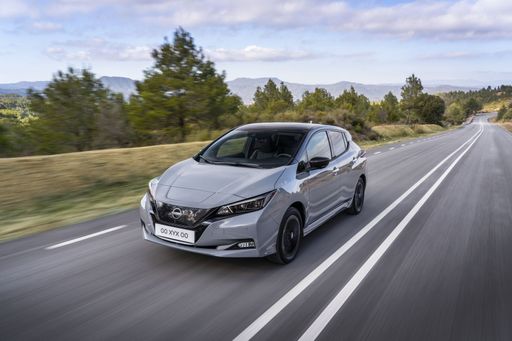 @ Nissan Motor Corporation
@ Nissan Motor Corporation
Nissan Leaf
BYD Atto 3
The BYD Atto 3 mixes quirky crossover styling with a cleverly packaged interior that feels more premium than its price suggests. Easy to drive, surprisingly practical and loaded with user-friendly tech, it's a strong choice for buyers who want an EV that's fun without being fussy.
details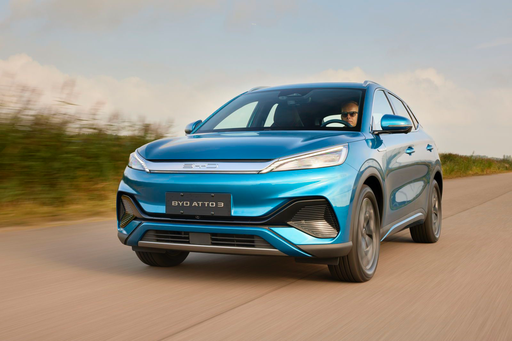 @ BYD Auto / BYD Global Media
@ BYD Auto / BYD Global Media
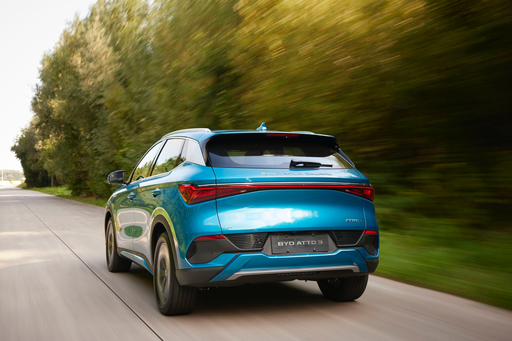 @ BYD Auto / BYD Global Media
@ BYD Auto / BYD Global Media
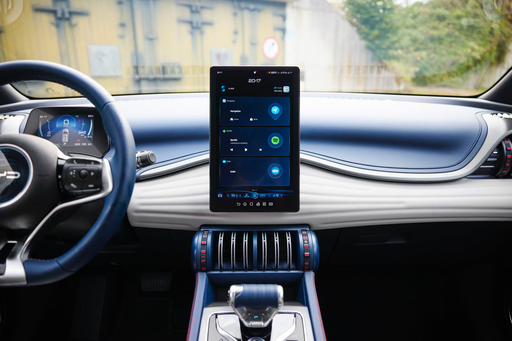 @ BYD Auto / BYD Global Media
@ BYD Auto / BYD Global Media
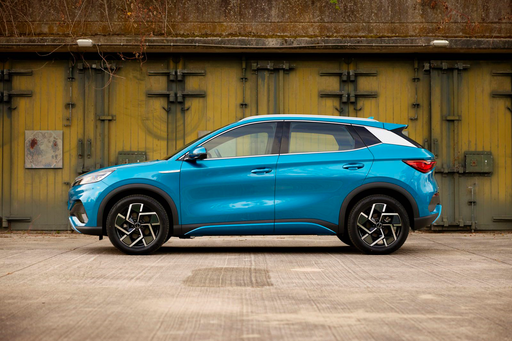 @ BYD Auto / BYD Global Media
@ BYD Auto / BYD Global Media
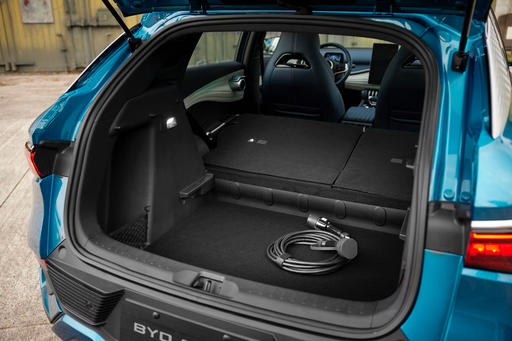 @ BYD Auto / BYD Global Media
@ BYD Auto / BYD Global Media
Nissan Leaf
The Nissan Leaf is a practical, easygoing electric hatch that turns daily commutes into a quiet, effortless affair while offering more cabin space than it lets on. It’s a sensible, wallet-friendly step into electrification for buyers who value comfort and simplicity over sporty drama, though those chasing long-distance thrills might look elsewhere.
details @ Nissan Motor Corporation
@ Nissan Motor Corporation
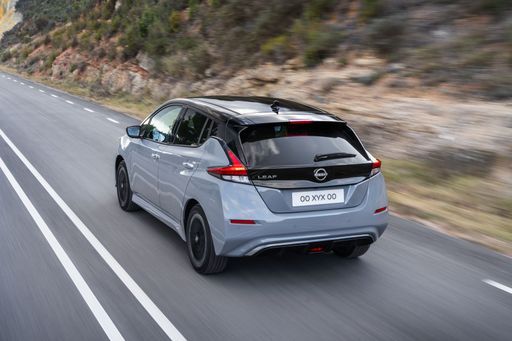 @ Nissan Motor Corporation
@ Nissan Motor Corporation
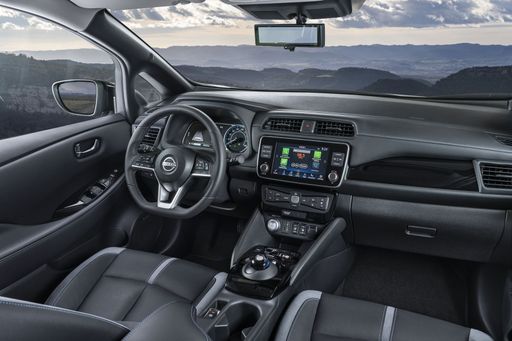 @ Nissan Motor Corporation
@ Nissan Motor Corporation
 @ Nissan Motor Corporation
@ Nissan Motor Corporation
 @ BYD Auto / BYD Global Media
@ BYD Auto / BYD Global Media
|
 @ Nissan Motor Corporation
@ Nissan Motor Corporation
|
|
|
|
Costs and Consumption |
|
|---|---|
|
Price
33400 - 35100 £
|
Price
30800 - 37200 £
|
|
Consumption L/100km
-
|
Consumption L/100km
-
|
|
Consumption kWh/100km
16 kWh
|
Consumption kWh/100km
16.7 - 17.8 kWh
|
|
Electric Range
420 km
|
Electric Range
270 - 385 km
|
|
Battery Capacity
-
|
Battery Capacity
39 - 59 kWh
|
|
co2
0 g/km
|
co2
0 g/km
|
|
Fuel tank capacity
-
|
Fuel tank capacity
-
|
Dimensions and Body |
|
|---|---|
|
Body Type
SUV
|
Body Type
Hatchback
|
|
Seats
5
|
Seats
5
|
|
Doors
5
|
Doors
5
|
|
Curb weight
1825 kg
|
Curb weight
1580 - 1756 kg
|
|
Trunk capacity
440 L
|
Trunk capacity
385 - 394 L
|
|
Length
4455 mm
|
Length
4490 mm
|
|
Width
1875 mm
|
Width
1788 mm
|
|
Height
1615 mm
|
Height
1540 - 1545 mm
|
|
Max trunk capacity
1338 L
|
Max trunk capacity
790 L
|
|
Payload
335 kg
|
Payload
384 - 415 kg
|
Engine and Performance |
|
|---|---|
|
Engine Type
Electric
|
Engine Type
Electric
|
|
Transmission
Automatic
|
Transmission
Automatic
|
|
Transmission Detail
Reduction Gearbox
|
Transmission Detail
Reduction Gearbox
|
|
Drive Type
Front-Wheel Drive
|
Drive Type
Front-Wheel Drive
|
|
Power HP
204 HP
|
Power HP
150 - 217 HP
|
|
Acceleration 0-100km/h
7.30 s
|
Acceleration 0-100km/h
6.9 - 7.9 s
|
|
Max Speed
160 km/h
|
Max Speed
144 - 157 km/h
|
|
Torque
310 Nm
|
Torque
320 - 340 Nm
|
|
Number of Cylinders
-
|
Number of Cylinders
-
|
|
Power kW
150 kW
|
Power kW
110 - 160 kW
|
|
Engine capacity
-
|
Engine capacity
-
|
General |
|
|---|---|
|
Model Year
2023
|
Model Year
2019
|
|
CO2 Efficiency Class
A
|
CO2 Efficiency Class
A
|
|
Brand
BYD
|
Brand
Nissan
|
What drive types are available for the BYD Atto 3?
The BYD Atto 3 is available as Front-Wheel Drive.
The prices and data displayed are estimates based on German list prices and may vary by country. This information is not legally binding.
